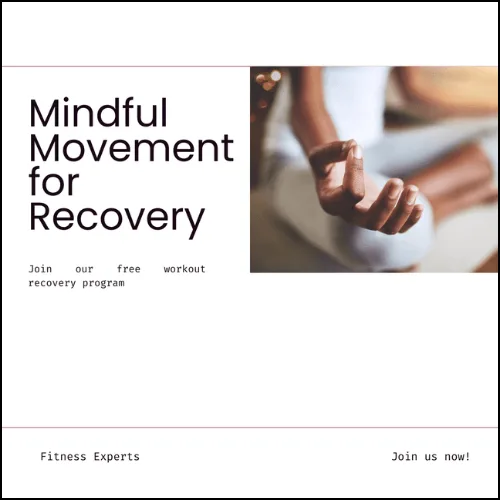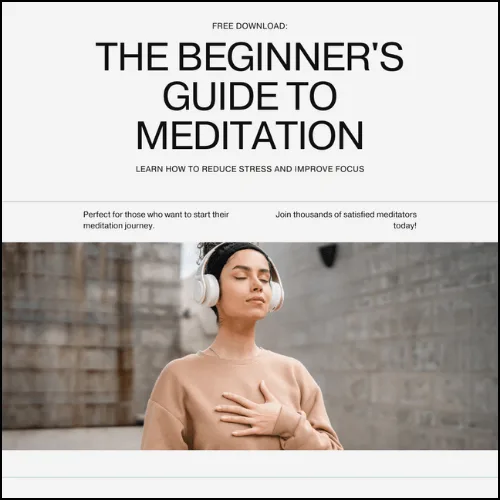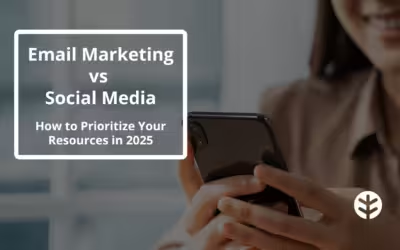If you’re a wellness business owner interested in growing your business authentically, let’s discuss lead magnets. They allow you to find new business through content you create to resonate with your target audience that also reflects your work and brand.
Lead magnet content is mid-to-low-funnel. You create it and offer it on your website in exchange for a prospect’s email address. Folks who engage with this content are often warm leads who are interested but just not ready to convert.
This approach not only increases your visibility and client base but also lets you create content that aligns with your values and attracts those who will truly appreciate what you have to offer.
The Purpose of a Lead Magnet
Have you ever been enticed to share your email and mobile number with a retailer in exchange for a free gift or discount? If so, you’ve experienced the power of a lead magnet.
Offering something of immediate value to a website visitor who is at least somewhat interested in your brand—like a free meditation guide or a yoga video—lets you make the most of their attention at that moment, even if they aren’t ready to become a customer just yet.
Reconnecting with a prospect in their inbox is invaluable. For the most part, new contacts from lead magnet downloads are qualified leads. However, some are warmer than others. For those who aren’t ready to book, you can follow up with nurture email sequences to stay relevant until they are.
With a business management solution like OfferingTree, you can actually automate the entire lead magnet process, from signup to nurture sequence to conversion. It may sound like a lot of work but do it once, and you’ll never have to again!
What makes a good lead magnet?
- Content is relevant to you and your services. If you make a stellar lead magnet that drives value for clients but not for you, what’s the point?
- Provide real value for the user. If a person is going to exchange their contact information for your lead magnet, make it worthwhile. Otherwise, you risk disappointing prospective clients.
- Support your business goals. Don’t forget to include CTAs, promote your services, and follow up with recipients to convert them.
Types of Lead Magnets
While there are many lead magnet types in use today, some are better suited to wellness and service-based businesses, so we’ll focus on those:
- On-Demand Video: These are especially powerful for wellness and service businesses as you can demonstrate your offerings – these could be classes, webinars, or tutorials.
- Templates: Business owners are often short on time, so creating spreadsheets or other business documents can be too time-consuming. Make it easy for them by offering a template, and you’ll start building credibility.
- Guides/Whitepapers: These resources contain detailed, informative content valuable to your industry.
- Checklists: All successful businesses meet a need or solve a problem. Consider the problems you solve for clients and create helpful checklists to guide prospects through complex processes.
Unlock the Power of Organic Search for Your Website
Download a copy of our Local SEO Checklist for Small Businesses
5 Lead Magnet Ideas
Since there is an overwhelming amount of information on lead magnets, including examples, we’ve narrowed down five examples that can be powerful tools for wellness and service businesses to help you determine which style is the best fit for you and your business:
Mindful Movements for Workout Recovery

To create this lead magnet, you’ll need a supporting video or a document that includes descriptions of each movement or a PDF file with photos of the movements and their explanations.
Insights for this type of lead magnet:
- Detailed explanations of how to do each movement
- Some sort of visual representation for each movement (images or video)
- Explanations of how each movement promotes recovery
- Call to action for additional/more robust services the user may be interested in
On-Demand Video: 5-Minute Flow for Relaxation
If your practice involves mindfulness, short guided videos can be a seamless way to highlight your offerings while giving users a convenient way to experience your teaching style.
Especially when it comes to lead magnet content, keep it short and sweet. After all, you’re giving it away for free!
Consider the following ideas for engaging on-demand meditation:
- Short intro with a grounding exercise
- Simple, grounding postures – think forward folds vs. backbends
- Finish with a simple pranayama exercise
- End with a mantra or other message they can carry with them throughout their day

Guide to Meditation for Beginners

If your audience is new to meditation, popular tropes and misconceptions may cause some uncertainty. Try creating a beginner’s guide to meditation like no other, and dispel those tropes and myths. Show them how simple and powerful a meditation practice can be.
Put yourself in the shoes of a beginner and consider:
- Detailed guidance for beginner-level meditation
- A guided meditation recording or video
- Call to action to take their practice further with a community of like-minded people
Collection of Recipes That Support Cardiovascular Health
People are often drawn to yoga, fitness, or meditation classes to help with various issues. Their medical providers may have directly or indirectly sent them your way. So, why not offer them complementary information?
In this case, a collection of recipes, combined with a class or other offering, will go a long way in helping your clients feel supported.
If this resonates with you, consider the following:
- Detailed recipes that include an explanation of the cardiovascular benefits
- Additional recommendations for supporting cardiovascular health
- Call to action for the services the creator provides that pair well

Digital Download: Gratitude Journal

Help your clients develop an attitude of gratitude. Not only does it foster a greater sense of well-being, but a daily journey also keeps your brand top of mind!
Here are some critical elements to include:
- Cover – Add a simple yet beautifully designed cover, and consider using graphics relevant to your business
- Daily pages – this could be a simple, numbered list of 3-5 things to be grateful for each day
- Monthly check-ins – this will allow the user to notice progress over time, and if they become a client, they’ll have a visual reminder of how your offerings are improving their lives
How to Create a Lead Magnet That Converts
If you’re a little overwhelmed right now, that’s normal! Lead magnets are supposed to be more work and take more resources than a simple blog post. They’re meant to attract your ideal customers, so let’s discuss where to begin.
Where to Begin
Review your best-performing content to determine the type of lead magnet you should create. The throughline to the ideal content for your audience may require an open mind.
For example, if a blog about scheduling social media posts drives the most traffic to your site, consider creating a content calendar template users can use to improve content planning.
Refine your lead magnet idea by answering the following questions:
- Who is your audience? What are their interests and needs?
- What problems do your audience have that are tangentially related to your services?
- What are your business goals?
- What does value mean to your audience?
- How much time and resources do you have to dedicate?
Creating Your Lead Magnet
If you don’t have design or content creation experience, that’s okay. There are several tools, many of which are free, that will make it easier for you. Canva is a great place to start, especially if you’re a beginner. They’ve even got lead magnet tutorials to guide you.
Aside from the lead magnet itself, you’ll need a landing page with a contact form to collect your prospect’s information. That way, the user gets a digital copy of your content directly in their inbox, and you get their email imported right into your CMS.
Follow these format, design, and landing page guidelines:
- Format: You certainly have a lot of options regarding format. Select one you can work in that also resonates with your audience.
- Design: Consistency is the bedrock of a strong brand. Ensure your lead magnets are designed according to your brand style, colors, etc.
- Landing Page: This is where your prospects land once they click on your lead magnet. Add an opt-in form to collect their contact details and send them the lead magnet.
Promote Your Lead Magnet
After creating your magnet, you’ll need to share it with your audience to gain some traction – there are several ways of doing this, and here are a few we recommend:
- Partnerships with wellness influencers: When you go on podcasts, do webinars, or participate in local events, ask partners to share your lead magnet.
- Guest blog posts: Posting blog content relevant to your lead magnet on a relevant website
- Share and promote on social media: Whether you boost posts about your lead magnet on social media or share organically, this is another great avenue for promotion.
OfferingTree’s Sales Funnels Help Lead Magnets Convert Better
Once you’ve created your lead magnet, measure the results. Give it a few months – it can take time to gain traction. Start by tracking how many people download it, then measure what percentage of those people convert to paid customers. Make adjustments based on results.
Want complete control over and visibility into your sales funnel? Would you prefer all your tools and data to be housed in one platform that gives you everything you need to run a successful business?
Experience all that and more – try OfferingTree free for 7 days or watch a demo to see it in action.



![How to Ask Customers for Reviews [with Email Templates]](https://www.offeringtree.com/wp-content/uploads/2021/10/how-to-ask-for-customer-reviews-cover-image-400x250.avif)
